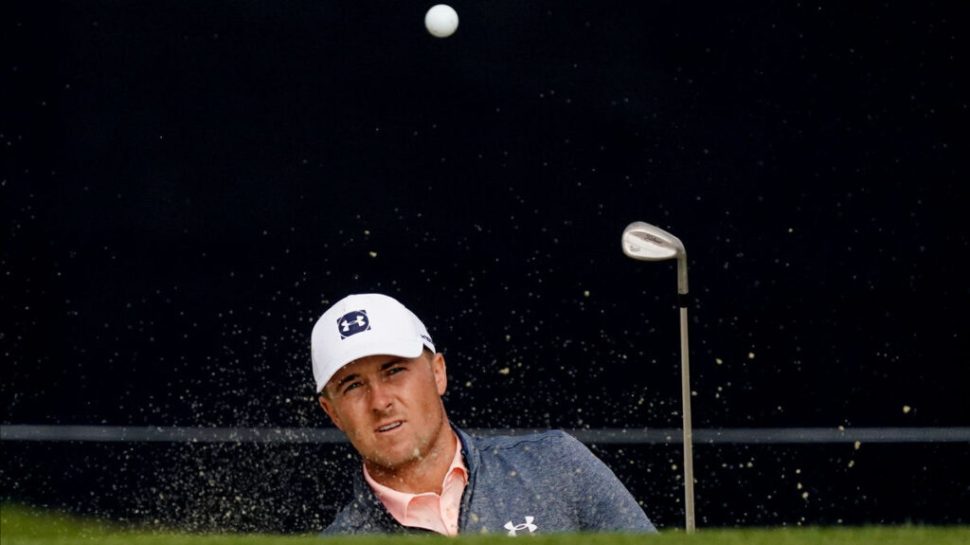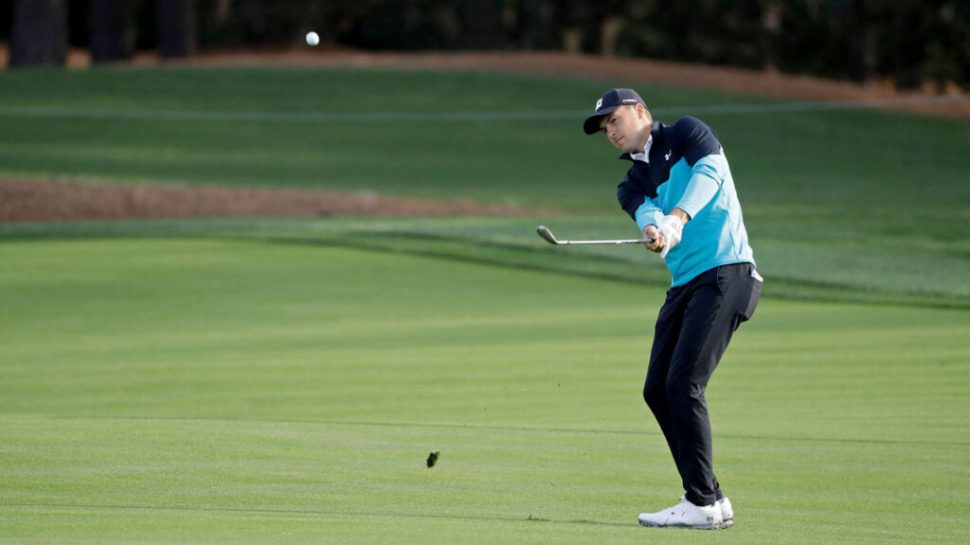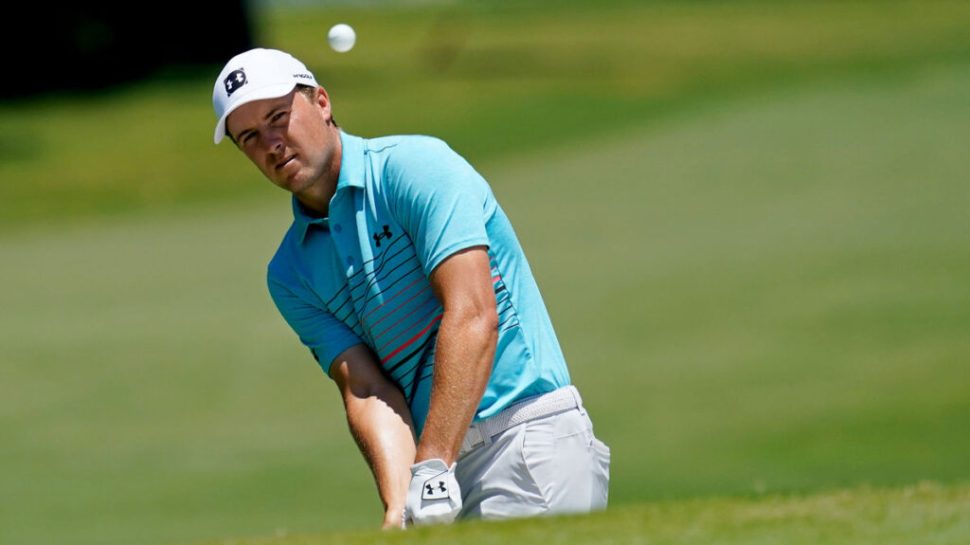
In the opening sequence of the acclaimed television program “Madmen” you see a businessman ensconced in his office with all the trappings of success. All appears well. Then in seconds all is in tatters — his body in free fall tumbling endlessly downwards till a final landing with him sitting back with cigarette dangling from his fingers.
Jordan Spieth’s arrival in professional golf was clearly on the radar screen for many who follow the sport. He left the amateur ranks at an early age of 19 — eschewing his remaining collegiate years at the University of Texas in 2012 and looking to make his mark in the professional game.
Spieth did not achieve a modicum of success — he dived into the pool with a resounding splash. Before his 20th birthday Spieth had snared his first PGA TOUR win. He became the fourth youngest PGA TOUR winner in history and the first teenager to do so since Ralph Guldahl won the Santa Monica Open in 1931. More on the ties to Guldahl shortly.

In 2014, Spieth made his Masters debut and nearly won the green jacket — finishing as runner-up to Bubba Watson and nearly eclipsing Tiger Woods as the youngest winner ever at Augusta. The very next year Spieth went one extra step — not only claiming his first major championship but leading from start to finish and also tying the tournament four-round record of 270 held by Woods.
The momentum from the Masters win propelled Spieth to one of the most dominant years in major championship play. In June he would win the U.S. Open at Chambers Bay. Then nearly winning The Open at The Old Course at St. Andrews and topping things off by battling winner Jason Day down the stretch and finishing as runner-up in the PGA Championship at Whistling Straits. In total — Spieth came as close as any person to winning all four majors in a calendar year.
Spieth’s arrival at such a young age had many comparing his exploits to what only a few had ever done in the sport with the likes of Bobby Jones, Jack Nicklaus and Woods.
Spieth’s game was not based solely on superior length but forging all elements together and topping that off with putting skills the envy of his peers.
In 2017, Spieth would reach his 9th PGA TOUR win before the age of 24 — something only Woods had done in the post-World War II era. Later that same year Jordan would add another major championship to his total claiming The Open at Royal Birkdale and doing so with a blitzkrieg of scoring in the final five holes leaving runner-up Matt Kuchar in the dust. Securing the Claret Jug pushed Spieth into an even higher altitude — joining the likes of Nicklaus as the only golfer to have won three majors before the age of 24.
Given all that Spieth had achieved one would imagine that the pathway for even more stunning triumphs was just ahead. Guess again. Since that win at The Open the sum total of wins — anywhere — for Spieth is zero. As in goose egg. Nada.
Strokes gained approach leaders 2015-2019:
— The European Tour (@EuropeanTour) November 11, 2020
2015 – Spieth – 🏆
2016 – Willett – 🏆
2017 – Rose – 2nd
2018 – Spieth – 3rd
2019 – Tiger – 🏆#TheMasters pic.twitter.com/rmL8ENjfR6
Inexplicably, there have been instances in golf’s rich history where a golfer displayed virtuoso performances and then as if a light switch were turned off — that very magic simply disappeared without any sense of plausibility. Earlier, the name Ralph Guldahl was mentioned. Like Spieth, Guldahl a fellow Texan, displayed vintage golf over a compressed time frame. Between 1937-1939, Guldahl would win three majors — including back-to-back U.S. Open crowns and a Masters green jacket along with six top ten finishes. But just when it seemed Guldahl would go on to even more successes his superior golf game simply vanished. In total, Guldahl would snare 16 PGA Tour titles including three Western Opens when that event was among the most prestigious in golf.
England’s Tony Jacklin showed much the same promise between 1969 and 1972 in winning The Open Championship and the next year claiming the U.S. Open title. In 1972, Jacklin nearly added a second Open title at Muirfield before being cruelly derailed by the late round theatrics of Lee Trevino chipping in at the 71st hole for par causing Jacklin to three-putt from inside 20 feet and losing the event. From that point forward Jacklin was never a force at the highest competitive level.
Nonetheless, Spieth’s situation is still a story to be written. At 27 years of age there’s sufficient time to change the storyline and Augusta has been a haven with certainly fond memories.
But the depth of Spieth’s fall since winning The Open in 2017 is startling. The former world number one player is ranked 80th heading into the final major for 2020. The Spieth putting magic has lost much of its sizzle — he’s currently ranked 123rd. And when one assesses strokes gained from the tee and you come in at 222nd there’s plenty of serious work to do. To be totally candid — if you can’t putt and you can’t drive — you can’t seriously play top tier level golf.
Despite the victory drought, Spieth has been resolute in seeing his way through the darkest of shadows and proclaiming that light is indeed at the end of the tunnel. One former major champion said it wryly but ever accurately that all golfers are just one shot away from either serious improvement or despair.

The likes of what happened to Guldahl and Jacklin can easily be countered with the comeback showed by Nicklaus after a three-year drought in winning majors between 1967-1970. And, who can ever forget what a golfer named Woods achieved in returning to the forefront after a 11-year major championship drought by winning his 5th green jacket in 2019.
Spieth’s progression back into the upper echelon starts anew with his 8:06 AM tee time Thursday. A golfer’s creed is never to look back — just keep turning the pages forward.
Jordan’s jumpstart is a journey in motion. This year’s Masters could well set the table for what lies ahead in 2021 and beyond.
